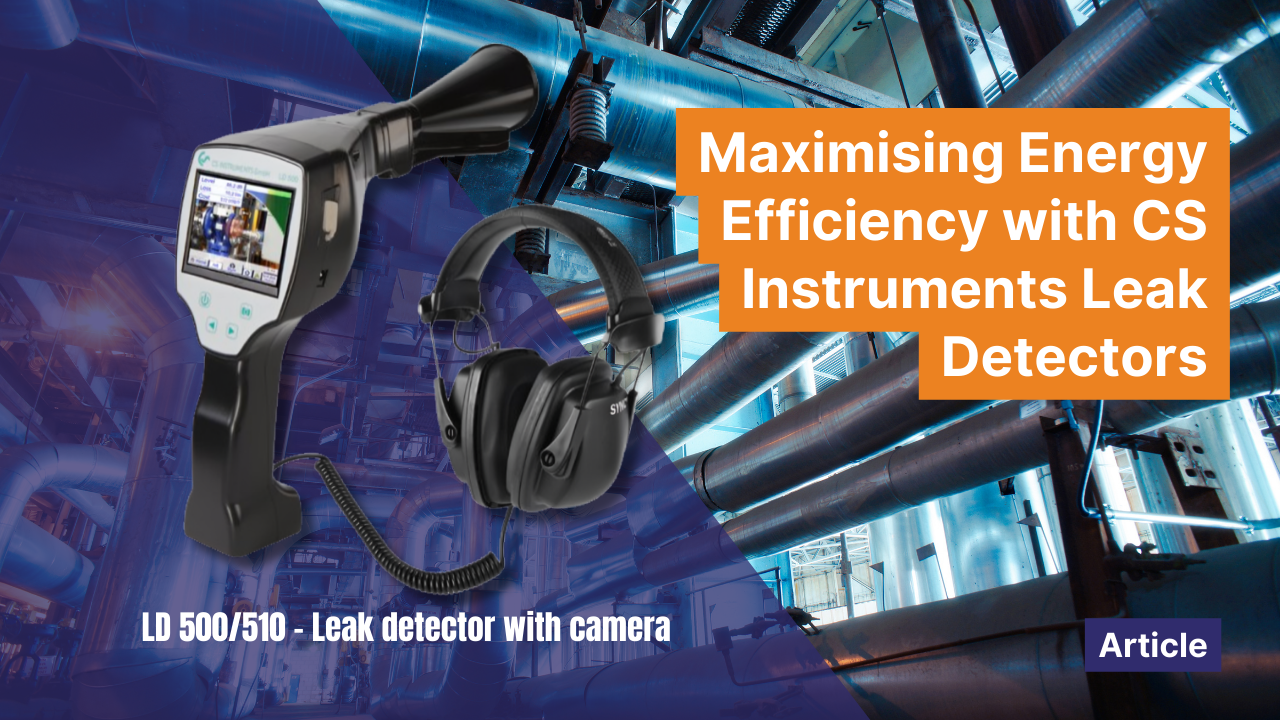
Maximising Energy Efficiency with CS Instruments Leak Detectors
Let's delve into how CS Instruments leak detection technology can contribute to achieving ISO 50001 accreditation and driving overall energy savings.
Understanding ISO 50001 and Its Significance
ISO 50001 serves as a management system standard designed for organisations dedicated to minimising their environmental footprint, conserving resources, and enhancing profitability by implementing an energy management system (EnMS).
This standard provides organisations with a structured framework to formulate policies for more efficient energy utilisation, establish targets and objectives aligned with these policies, and leverage data to gain insights for informed decision-making regarding energy consumption.
Integral to this process is the continuous cycle of planning, executing, monitoring, and improving energy management practices within the organisation, known as the Plan-Do-Check-Act (PDCA) cycle.
Applying the PDCA Cycle to Compressed Air Systems
When applying the PDCA cycle to compressed air systems, primarily where CS Instruments technology is involved, the focus lies on the following:
- Identifying leakage points to serve as a diagnostic tool within the system.
- Addressing identified defects (leaks) promptly within the EnMS execution phase.
Detecting Compressed Air Leaks in Pipework
CS Instruments' LD 500 / LD 510 leak detectors offer an effective solution for pinpointing leaks in compressed air pipework on-site. These detectors allow for the logging and tagging of multiple leak locations, complete with photographic evidence, facilitating efficient repair processes.
Determining Leakage Rate
For accurate leakage rate measurement during the planning phase of the PDCA cycle, a mobile PI 500 portable flow meter in conjunction with a VA 500 volumetric flow meter can provide valuable insights. Precise leakage rates can be obtained and analysed using CS Basic evaluation software by measuring air loss during production downtime.
Calculating Energy Cost Savings from Leakage Rates
Once the total leakage rate is established, organisations can quantify potential annual energy cost savings. This calculation considers factors such as compressed air costs, system operating hours, fixed and variable costs associated with compressor operations, and energy cost calculations.
By leveraging CS Instruments technology and adopting a systematic approach to managing compressed air systems, organisations can realise substantial energy cost savings while advancing their sustainability objectives.
Contact Us
Contact our experts today by email sales@pvl.co.uk or call +44 (0) 1892 66 44 99 for personalised insights into optimising compressed air energy costs or exploring leakage and flow rates within your system.


